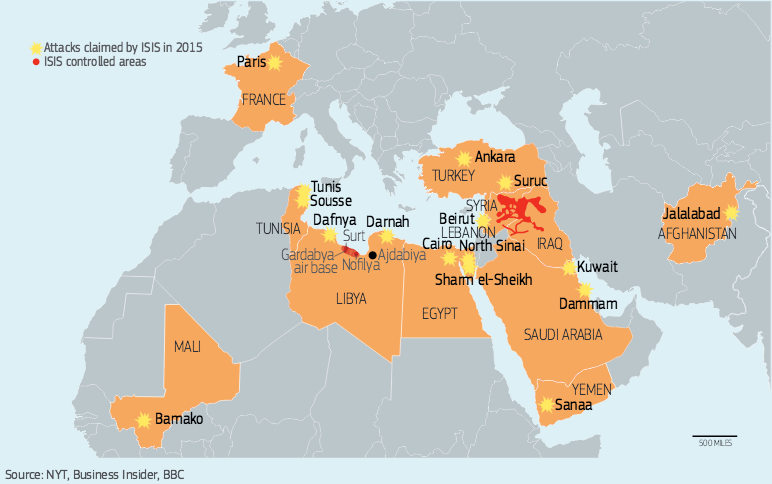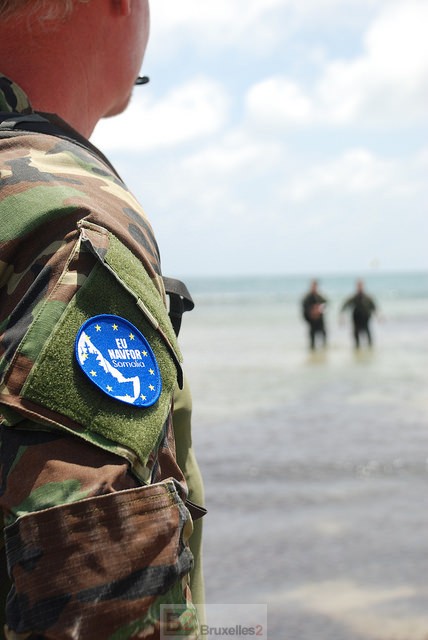The new wave of attacks: some lessons (V2)
(B2) The wave of terrorism that Europe has experienced since 2015 is not new in itself. The European territory has already experienced similar waves: in 1986 and 1995 in France, under the influence of Iran and the Algerian GIA, in the second case; in Ireland/UK, with the IRA, in Spain with ETA, in Germany with the Baader Gang, in Italy with the Red Brigades and the extreme right, throughout Europe with Palestinian terrorism, Armenian, etc. But it presents a new characteristic: the absence of political demands as such, in the classic sense of the term (independence of a territory, change of political orientation of the country), except that of sowing terror, division in society, using the situation in the Middle East as a pretext.
Authors from within
The perpetrators are often nationals of the Member States, assimilated, if not fully integrated, most often born on the national territory. Their Muslim religious conviction often seems very recent, even sometimes superficial and very caricatural. The motivations for taking action remain to be determined.
The objective: to die as a suicide bomber
The attack scenarios have diversified: instead of the traditional model of the (remote-guided) explosive device, these terrorists prefer the kamikaze attack, with a belt of explosive devices, intervening with automatic weapons (Kalashnikov type) or edged weapon (knife), or even weapons by destination (heavy goods vehicles). Even if they use ranged weapons (firearms, etc.), the objective of the attacker(s), often few in number, seems to die as a suicide bomber, under the bullets of the police. Death as a "hero of misfortune" being part of the scenario. This also has the advantage of simplicity in setting up the action. It turns out to be all the more difficult to parry. The notion of making it out alive becomes a "detail".
Various targets, with high symbolic value
The people targeted are very diverse. Terrorists intervene either in public places, frequented by ordinary Europeans, thus targeting the population as a whole, or, more rarely, they target specific targets (soldiers, police officers, Jewish or Christian places). But, in most cases, the targets have a symbolic value of free and pluralistic Western life. It is the media that are targeted, cultural concert halls or stadiums, cafes or restaurants (1), fairs or popular festivals, public transport stations located near places of power or airports. On the other hand, they do not (so far) directly attack places of power (too protected?).
A European reaction
On the European side, most of the measures decided in February 2015 — which are often the resumption of an old catalog of measures — are now either officially proposed or formally adopted, even if they are not yet in force. But these advances only concern the legislative and repressive aspects. The European Commission put forward a new proposal in December 2015 on border guards which is much more innovative.
On the prevention and radicalization aspect, the results are much more nuanced. The approach to European (foreign) fighters has suffered from a very late awareness, which is still very limited, despite repeated calls from many European officials, such as the anti-terrorist coordinator Gilles de Kerchove.
A slow but lasting realization
The positive element is that from now on, apart from a few exceptions, no European state can feel safe or exempt from an attack. Around ten Member States are directly exposed: in addition to France and Belgium, Italy, the Netherlands, Germany, Austria, Denmark, Sweden, the United Kingdom, the Czech Republic, the Greece could be in the sights (2). All the other countries are indirectly, through their citizens who travel around the world. The diversity of nationalities affected in the various attacks outside Europe proves this. This succession of attacks, more or less claimed by Daesh or Al Qaeda, has similarly united the international community in a much more certain way than any other declaration of solidarity. Tunisia, Russia, Lebanon, Turkey, Egypt have thus been the object or victims of murderous attacks.
(Nicolas Gros-Verheyde)
(1) Here we find the will of certain ultra-radical Islamists (such as the Somali Shebabs) to sanction "places of debauchery": music, alcohol, sport.
(2) This text was written in the first version in January 2016 before Germany and the United Kingdom were, in turn, affected.

Article first online on 26.6.2015, updated 23.5.2017
